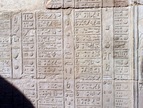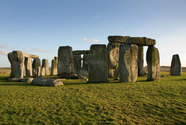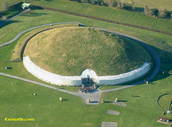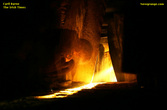Celebrating Sacred Time
This is a calendar from ancient Egypt. The ancient Egyptians were probably the first to adopt a solar calendar. They observed the rise and fall of the Nile, and by measuring this and also by recording astronomical data, they worked out, as early as 4,000 BCE that the year was 365 days long and they calculated that twelve months of thirty days each, plus five extra days at the end would give them the right number. But they hadn't grasped that it takes the earth an extra six hours to travel around the sun, so their calendar was inaccurate.
And, much nearer home, we can see that very early in their history the people of our own islands had the ability to measure the passage of time and to compute complex calendars by observing the movements of the stars, the sun, and the moon. Some five hundred years or so before the pyramids were built, these massive monuments were constructed. Stonehenge has been described as an enormous calendar, or a temple to the sun and is still totally awesome in its ruined, though partially reconstructed state today. It is aligned on the axis of the midsummer sunrise and the midwinter sunset.
This is an aerial view of the enormous Megalithic tomb at New grange in Ireland - which is roughly contemporaneous with Stonehenge in England. The reconstruction has been rather controversial - but the site is awesome. It is part of a huge complex which includes other megalithic tombs. The roof box at the entrance is aligned to face east and to catch the first rays of the rising sun at dawn on the winter solstice ...
And this is the breathtaking moment at daybreak on Dec 21st - when the rays of the rising sun come through the roof box and shine straight down the central passage and hit the stone basin at the rear of the tomb. The people who erected these amazing monuments left no written records, so we can only guess at their intentions- but could obviously track the movements of the sun and the moon and compute the solstices, the equinoxes and maybe eclipses too. And all this seems to have been closely associated in their minds with ritual and religion. This is where they buried their dead.





